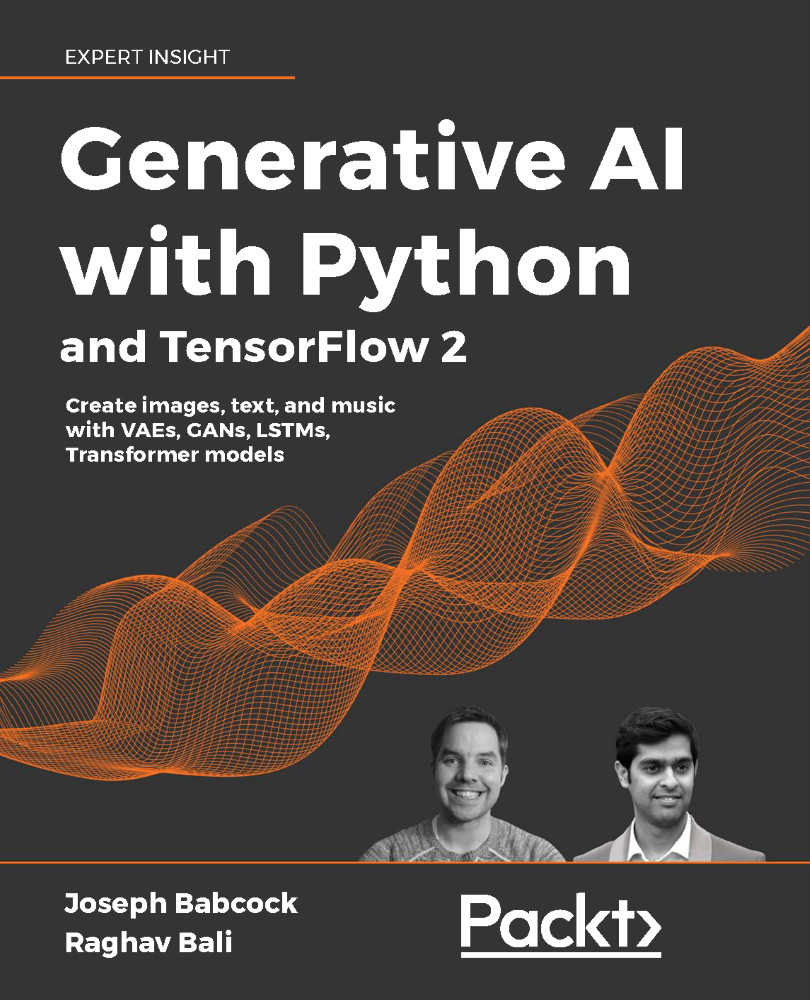Improved GANs
Vanilla GAN proved the potential of adversarial networks. The ease of setting up the models and the quality of the output sparked much interest in this field. This led to a lot of research in improving the GAN paradigm. In this section, we will cover a few of the major improvements in developing GANs.
Deep Convolutional GAN
Published in 2016, this work by Radford et al. introduced several key contributions to improve GAN outputs apart from focusing on convolutional layers, which are discussed in the original GAN paper. The 2016 paper emphasized using deeper architectures instead. Figure 6.10 shows the generator architecture for a Deep Convolutional GAN (DCGAN) (as proposed by the authors). The generator takes the noise vector as input and then passes it through a repeating setup of up-sampling layers, convolutional layers, and batch normalization layers to stabilize the training.
Figure 6.10: DCGAN generator architecture7
Until the introduction of...












































































